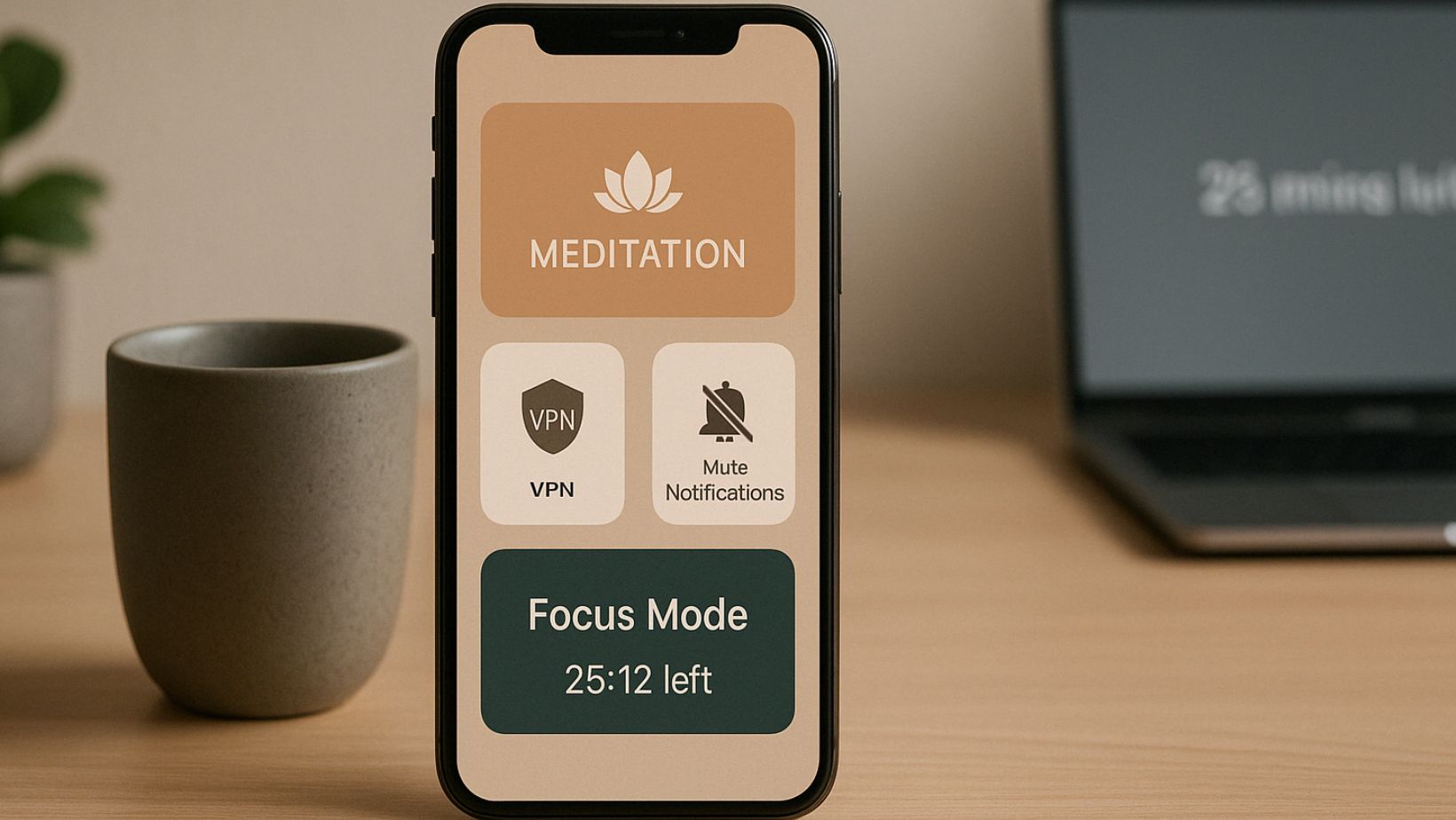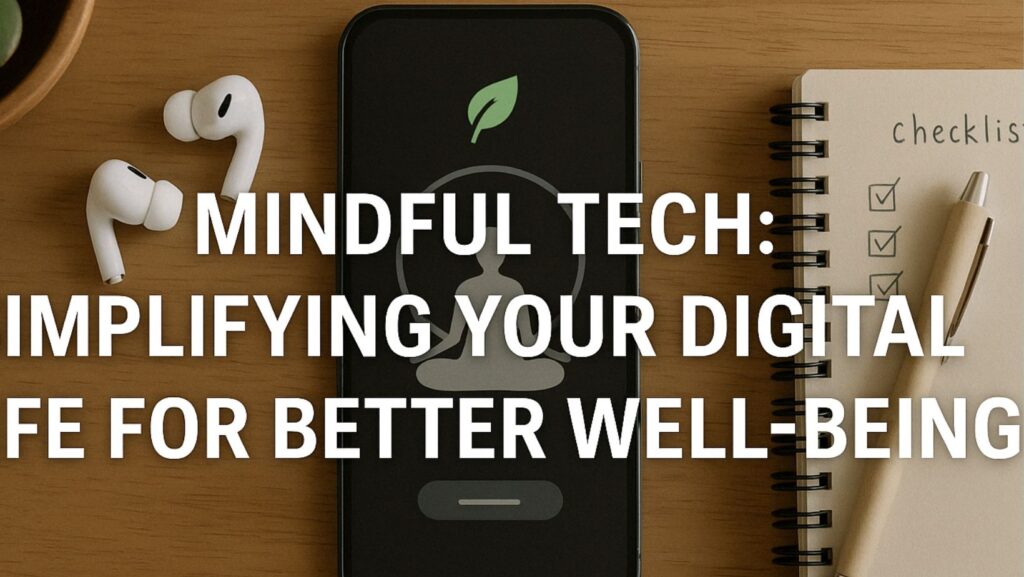It started with 14 browser tabs, 3 open email drafts, and 9 active desktop apps—and a brain that couldn’t seem to focus on any of them.
Working remotely can blur the lines between productivity and overwhelm. When your digital space is chaotic, your mind often follows. But the good news? Decluttering your digital life doesn’t require drastic measures—just mindful ones.
In this article, you’ll learn how to simplify your online environment, minimize tech-induced stress, and introduce gentle tools that enhance both focus and peace of mind. From streamlining your files to setting boundaries (and yes, even using a VPN), we’ll help you create a digital space that supports your well-being.
Why Digital Simplicity Matters for Mental Health
Modern technology has gifted us incredible tools—but also infinite distractions. Between constant pings, open tabs, scattered files, and endless content, our attention is pulled in dozens of directions.
The Mental Cost of Clutter:
- Increased anxiety: Unorganized apps and files create a subconscious sense of chaos.
- Decision fatigue: Too many digital choices lead to burnout.
- Reduced focus: Multitasking is a myth—each distraction derails productivity.
Just as physical clutter weighs on our minds, so does digital overload. Simplifying your digital environment is self-care—a way to restore clarity and regain control.
Step 1 – Audit Your Digital Life
Before you simplify, you need to see what you’re working with. Take 30 minutes to review how—and where—you spend your digital energy.
Try This Audit Checklist:
- How many apps or tabs do you keep open during the day?
- Is your desktop cluttered with files?
- Are there cloud drives or email inboxes you avoid because they feel overwhelming?
- Do your phone notifications interrupt your peace?
Tip: Use screen time trackers or journaling apps for a few days to observe your behavior without judgment.
The goal isn’t perfection—it’s awareness.
Step 2 – Declutter with Intention
Once you’re aware of your habits, begin trimming the digital excess. Focus on what supports your well-being and remove what doesn’t.
File & Folder Declutter:
- Move everything on your desktop into a single “To Organize” folder.
- Create clear categories: “Work,” “Personal,” “Archive.”
- Set a 15-minute timer each day to clean one folder.

App Streamlining:
- Uninstall apps you haven’t used in the last month.
- Hide or disable apps that drain focus (looking at you, social media).
- Replace cluttered dashboards with minimalist productivity tools.
Inbox Simplification:
- Unsubscribe from newsletters you never read.
- Use folders or labels to sort emails.
- Designate “email check” times instead of reacting instantly.
Decluttering is less about deleting everything and more about creating calm digital spaces you want to return to.
Step 3 – Embrace Mindful Digital Tools
Once you’ve cleared the clutter, it’s time to rebuild your digital environment intentionally—with tools that serve your needs and values.
Tools for Focus & Clarity:
- Distraction blockers like Freedom or Cold Turkey
- Pomodoro timers (e.g., Focus Booster) to build concentration
- Grayscale mode on your phone to reduce screen stimulation
- VPNs to secure your online sessions and reduce digital noise
Yes—even VPNs can be part of a mindful tech approach.
Why a VPN fits in a minimalist digital life:
A VPN (Virtual Private Network) isn’t just about privacy—it’s a digital boundary setter. It can block intrusive ads, protect you on public Wi-Fi, and give you access to the tools you need, wherever you are—without constantly being tracked. That’s less noise, more peace.
If you’re unfamiliar, here’s what a VPN is and how it supports online clarity.
Step 4 – Set Digital Boundaries and Rituals
Your relationship with technology improves not just by what you remove, but by the boundaries you set.
Try these digital rituals:
- Morning Tech Pause: Spend your first 30 minutes tech-free—stretch, breathe, reflect.
- Notification Filters: Only allow pings from essential contacts or apps

- Evening Digital Wind-Down: No screens 1 hour before bed. Try journaling, herbal tea, or a book.
- Tech-Free Zones: Make your dining area or bedroom a no-screen space.
Boundaries are a form of gentle resistance—a way to choose presence over passivity.
The Quiet Rewards of a Digitally Minimalist Life
As you simplify, you’ll likely notice subtle but powerful shifts:
- You’ll think more clearly.
- You’ll feel more present during your day.
- You’ll enjoy your devices more because they’ll serve you—not distract you.
And most importantly, you’ll begin to reclaim the energy that used to be spent toggling, swiping, and scrolling.

This isn’t about perfection—it’s about progress. A minimalist digital life is one where your tools align with your values. Where you choose clarity over clutter. And where even a small change—like setting boundaries or using a VPN—helps build a healthier, more meaningful connection with the world around you.
Conclusion: Technology That Supports, Not Suffocates
Mindful tech isn’t about giving up devices—it’s about using them with clarity and intention.
By auditing your habits, streamlining your space, and embracing tools that empower (not overwhelm) you, you can build a digital life that supports your well-being rather than chipping away at it.
And remember: You don’t need to overhaul everything in one day. Start with one folder. One app. One choice. Let simplicity grow from there.
Because in the Simply Seven way of living—less isn’t just more. It’s everything.
